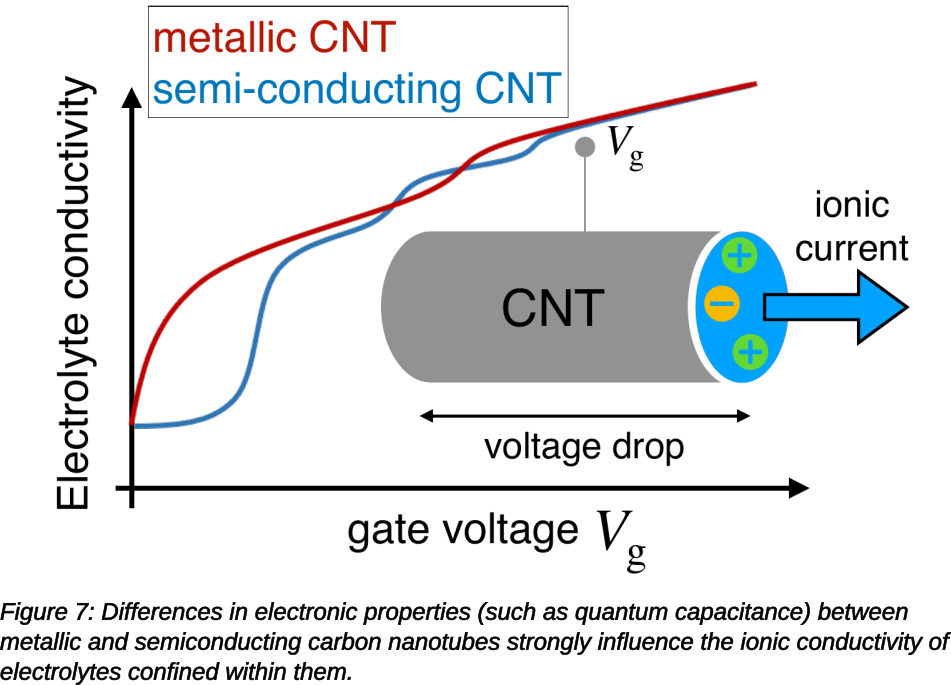Nanofluidics and transport at the nanometric scale
We study how ions and molecules move through nanometric channels—a key challenge for biology and technology alike.
Many biological systems and technological devices rely on the transport of ions or molecules through nanopores or nanotubes. Understanding these phenomena is essential for applications such as desalination, selective filtration, and molecular detection.
Our team develops theoretical models to describe passive and active transport in these confined environments. We combine non-equilibrium statistical physics, hydrodynamics, and electrostatics to explain experimental observations and predict new behaviors.
Our work highlights critical effects such as hydrodynamic slip, charge regulation, and the impact of electronic properties of materials (such as the quantum capacitance of carbon nanotubes) on ionic conductivity.
These studies contribute to a deeper understanding of the fundamental mechanisms of nanofluidic transport and open the way to innovative applications in biophysics and nanotechnology.
Sub-Themes :
- Ionic and Molecular Transport in Nanopores
- Coupling Between Electronic Properties and Ionic Conductivity
- Analytical Models and Simulations for Confined Systems
